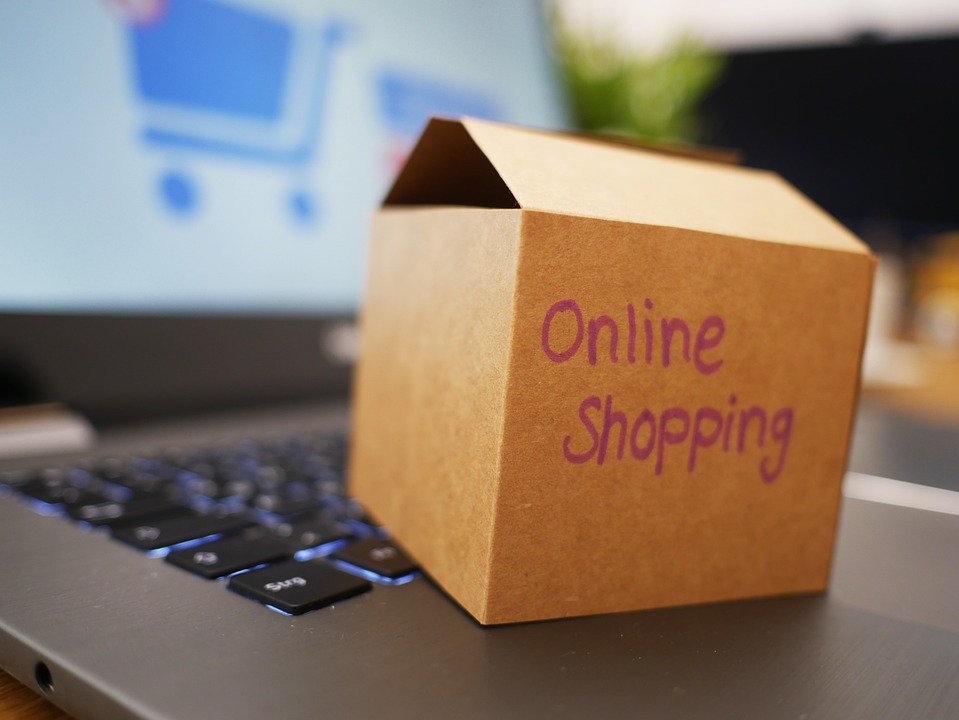The Last Mile Problem: How Ecommerce Companies are Solving the Delivery Dilemma
In recent years, the rise of ecommerce has led to a significant increase in online shopping. While this trend has brought numerous benefits, including greater convenience and accessibility, it has also posed a major challenge for ecommerce companies: the "last mile" problem.
The last mile problem refers to the difficulty and cost associated with delivering packages from a customer’s doorstep to their hands. It is often referred to as the "final leg" of the delivery process, where packages must be transported from a carrier’s hub or distribution center to a customer’s home. This stage is typically the most labor-intensive and expensive part of the delivery process, accounting for a significant proportion of total delivery costs.
So, how are ecommerce companies solving this delivery dilemma?
1. Outsourcing to Third-Party Logistics Providers
Many ecommerce companies have opted to outsource their last mile delivery to third-party logistics (3PL) providers. These companies specialize in delivering packages on behalf of ecommerce businesses, providing expertise in routing, scheduling, and managing the last mile of the delivery process. By outsourcing, ecommerce companies can focus on their core competencies, while 3PL providers handle the complex and labor-intensive task of final mile delivery.
2. Using Data and Technology to Optimize Routes
Innovative companies are using data and technology to optimize their delivery routes, reducing the costs associated with the last mile problem. Advanced routing software analyzes real-time traffic data, construction updates, and weather forecasts to optimize routes, ensuring that packages are delivered as quickly and efficiently as possible. This not only saves time and money but also improves customer satisfaction.
3. Investing in Sustainable and Eco-Friendly Delivery Solutions
The rise of sustainable and eco-friendly delivery solutions is another trend emerging in the industry. Companies such as Amazon and UPS are investing in electric and hybrid delivery vans, as well as using alternative fuels, to reduce their carbon footprint and operating costs.
4. Partnering with Last-Mile Delivery Startups
The emergence of last-mile delivery startups has also presented new opportunities for ecommerce companies. These startups offer innovative solutions, such as using motorcycles, bicycles, or drones for delivery, to navigate congested city streets and reduce delivery times. Partnering with these startups can help ecommerce companies gain access to these new technologies and expertise, allowing them to improve their delivery services.
5. Implementing In-Store Pickup Options
Finally, some ecommerce companies are addressing the last mile problem by offering in-store pickup options. This allows customers to place online orders and pick up their packages at a physical store location, reducing the need for delivery and the associated costs.
Conclusion
The last mile problem is a complex challenge facing ecommerce companies, but it is one that can be solved through a combination of technology, data analysis, and innovative partnerships. By outsourcing to 3PL providers, optimizing routes, investing in sustainable delivery solutions, partnering with last-mile delivery startups, and implementing in-store pickup options, ecommerce companies can ensure that their customers receive their packages efficiently and cost-effectively. As the ecommerce landscape continues to evolve, it will be essential for companies to prioritize delivery logistics and develop effective solutions to this problem.
#Mile #Problem #Ecommerce #Companies #Solving #Delivery #Dilemma





Muchas gracias. ?Como puedo iniciar sesion?
**mindvault**
mindvault is a premium cognitive support formula created for adults 45+. It’s thoughtfully designed to help maintain clear thinking
Insgesamt bietet Seven Casino auf mobilen Geräten ein robustes und
flexibles Spielerlebnis, das den Bedürfnissen der Spieler gerecht wird, sowohl in der App als auch auf der mobilen Website.
Im Vergleich zur mobilen Website bietet die App möglicherweise eine noch flüssigere Erfahrung, insbesondere in Bezug auf die Benutzeroberfläche und die
Optimierung der Spiele. Spieler können die App aus den entsprechenden App-Stores herunterladen oder alternativ die mobile Website
von Seven Casino verwenden, die eine ähnliche Benutzererfahrung
bietet. Die Seven Casino App ermöglicht es Spielern, ihre Lieblingsspiele bequem
von mobilen Geräten aus zu genießen.
Diese Programme bieten einen Mehrwert und erhöhen die Attraktivität
der Plattform erheblich. Diese Freispiele sind meist auf eine bestimmte Anzahl von Drehungen begrenzt und haben eine festgelegte Gültigkeit.
Darüber hinaus gibt es auch regelmäßig Seven Casino Freispiele, die entweder als Teil eines Willkommensangebots
oder als separate Promo-Aktion angeboten werden. Ein herausragendes Angebot bei Seven Casino ist der Willkommensbonus,
der neuen Spielern nach der Registrierung zur Verfügung steht.
Seven Casino bietet eine Vielzahl von attraktiven Bonusprogrammen, die sowohl neuen als
auch bestehenden Spielern zahlreiche Vorteile verschaffen. Im Hinblick auf das Spielangebot bietet Seven Casino eine beachtliche Auswahl an Spielen, die
von Spielautomaten bis hin zu Live-Casino-Optionen reicht.
References:
https://online-spielhallen.de/legzo-casino-mobile-app-ihr-schlussel-zum-mobilen-spielvergnugen/
Dann kann es sein, dass ein Willkommensbonus nur einmal möglich ist.
Bonuspaket, Startguthaben, Freispiele sind für Online Casinos wichtige Marketing-Instrumente, mit
denen sie Neukunden für sich interessieren wollen. Auch bei Turnieren, in denen ihr euch mit anderen Spielern messt, könnt ihr
Boni oder Sachpreise gewinnen.
Nutzen Sie den Casino Einzahlungsbonus für Spiele, die Sie kennen und
genießen. Diese Boni sind vorteilhaft, da sie zusätzliches Spielgeld bieten und somit die Gewinnchancen erhöhen. Casino Bonus Codes sind
alphanumerische Kombinationen, die von Spielern verwendet werden, um spezielle Boni oder
Promotionen im Casino mit Einzahlungsbonus zu beanspruchen.
Allerdings sind sie oft mit bestimmten Bedingungen wie Mindesteinzahlungen und Umsatzanforderungen verbunden. Diese Boni
sind besonders attraktiv für neue Spieler, da sie zusätzliche Mittel und Spielzeit bieten. Zusätzlich gibt es häufig noch
einige Freispiele als Extra obendrauf.
References:
https://online-spielhallen.de/avantgarde-casino-aktionscode-ihr-weg-zu-exklusiven-vorteilen/
Guests are encouraged to stay updated by frequently checking the
casino’s promotions page, ensuring they never miss out on these lucrative and enjoyable benefits.
These private zones offer a tranquil environment away from
the bustling main casino floor, with access controlled to
maintain privacy and exclusivity. The high-quality digital
sound and visuals simulate an immersive experience, making it feel like you’re at the racetrack or stadium.
They are equipped with real-time data feeds, ensuring bettors have up-to-the-minute information at their fingertips.
The immersive sound effects and high-definition graphics ensure that each game is not
just a chance to win prizes but also a deeply engaging entertainment
experience. Additionally, the progressive jackpots
present opportunities for life-changing wins, making each pull of the
lever or push of a button a potentially thrilling experience.
References:
https://blackcoin.co/bay-101-casino-in-depth-review/
That’s our best guess at the future of online casinos in the UK over
the next few years, but what’s your take? By far and away these are
the best types of bonuses for players as they offer the chance to win with no risk at all.
Everyone loves a bonus so we’ve teamed up with some of the best casino sites in the
UK to bring you the latest bonuses. On top of the additional value that these new sites
offer you tend to find that the overall quality and experience at these casinos is far superior to what many of the more traditional casino apps have to offer.
One of the best things about the casino sites embracing
this new casino trend is the extra value – real cash value – that some of these achievements based gaming systems open up.
You don’t need to be involved in the online casino industry to know that the whole world is going gamification crazy and especially so at new casino
sites.
We go a step further and check the licence registry
of the authority in question to ensure that the operator and
the website are listed there. Banking methods and speed are almost always deciding factors when choosing a new casino platform.
Our OC experts look for trending game mechanics like Megaways, tumbling reels, cluster pay, scatter pay,
and pay both/all ways.
For us, any online US casino that was launched or significantly overhauled
within the last 12 months is considered new. As displayed
above, Horseshoe is our top pick for the best new casino.
New casinos avoid this by using more modern, up-to-date technology.
With multiple accounts, it can be harder to recognize the amount of
time and money you’re spending on all the different sites,
so these kinds of tools can help you keep track of your activities and create safety
nets. New casinos are all about using the latest technologies, and as a result, you’ll nearly
always find a dedicated iOS and Android app to download.
With multiple casino accounts, you don’t want to lose
track of where your money is.
References:
https://blackcoin.co/2025-best-league-players/
Great bonuses, different games, online casino games with live dealers, 24/7 support,
and the ability to play on your smartphone, as well as the official licence
The platform also features National Casino live dealer games, where players can interact with professional dealers in real-time, bringing the authentic casino
atmosphere directly to their screens. National Casino Australia offers a complete
online gaming experience for players looking for top-quality casino games and exciting sports betting opportunities.
The platform offers a diverse range of games, including real money online pokies, table games, live dealer options, and competitive
sports betting markets. National Casino Australia offers an unmatched online
gambling experience with its extensive selection of games, live dealer options, sports betting,
generous promotions, and secure payment methods. One of
the highlights of National Casino Australia is its
selection of live dealer games, which allow players to experience the excitement of
a real casino without leaving home.
Microgaming progressive jackpots include the famous Mega Moolah series.
You can activate bonus rounds instantly instead of waiting for them to trigger naturally.
Popular bonus buy pokies in our collection include titles from Pragmatic Play, BGaming, and other leading providers.
These pokies let you purchase direct entry to free
spins, multiplier rounds, or special features. Our exclusive pokies often feature enhanced RTPs or bonus features not available elsewhere.
Look for big-name providers like Microgaming, NetEnt, Pragmatic
Play, or Evolution. Check for popular Australian-friendly options like Visa, Mastercard, Neosurf, or even cryptocurrencies.
As long as you set limits and play responsibly, it’s a great way to unwind after work.
Join National Casino today, make your first deposit, and
claim up to AUD $1,500 + 150 Free Spins – all within minutes!
References:
https://blackcoin.co/sign-in-your-gateway-to-online-casino-action/
online casino that accepts paypal
References:
internskill.in
casino sites that accept paypal
References:
chaakri.com
usa casino online paypal
References:
candidates.giftabled.org
online blackjack paypal
References:
http://www.uocharon.com
casino online uk paypal
References:
http://jobs.recruithub.africa/profile/virgilhertzog
paypal online casino
References:
https://ipo.fountain.agri.ruh.ac.lk/employer/best-online-casinos-australia-top-aussie-gambling-sites-2025/